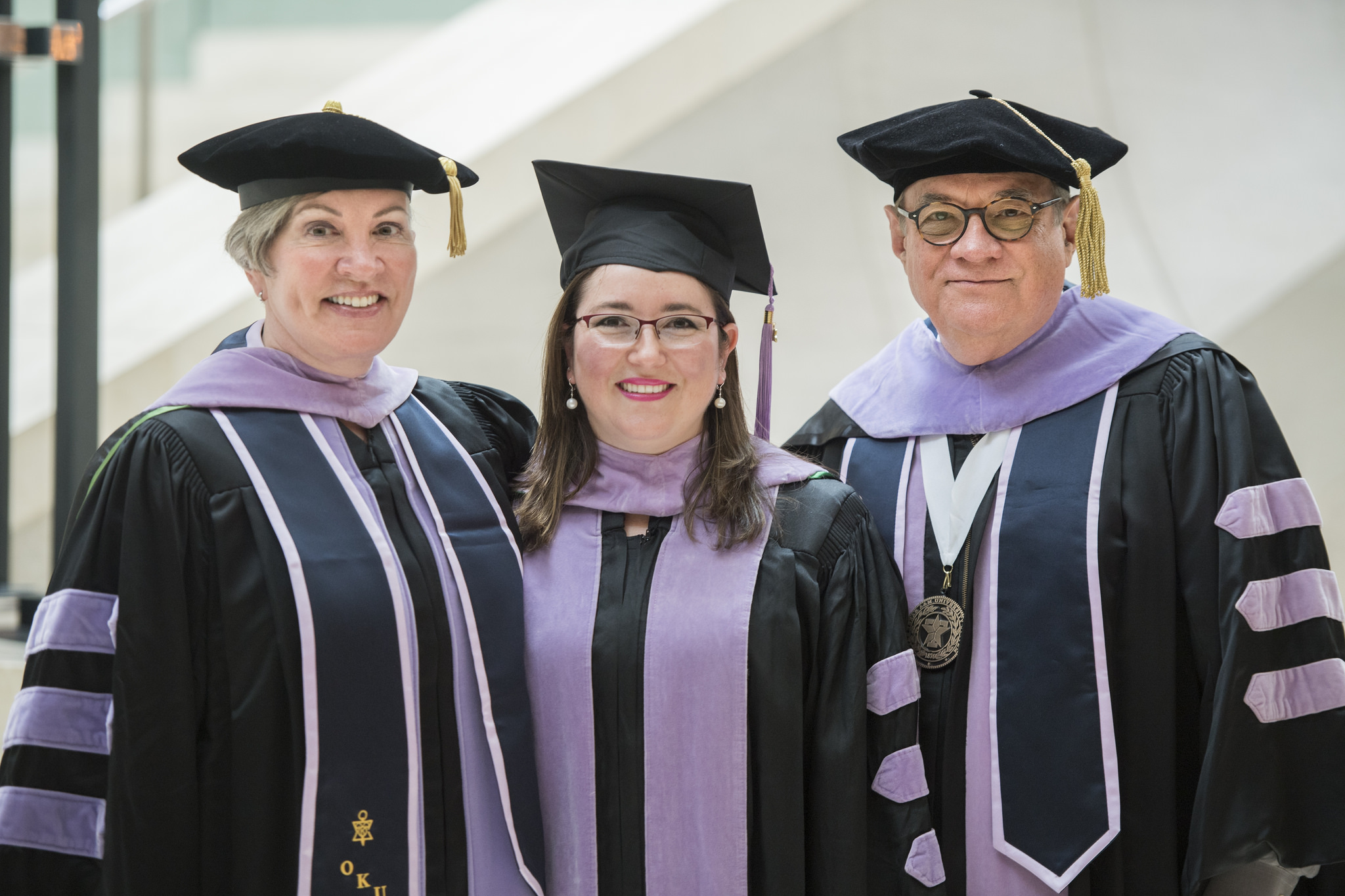A day of firsts

It was Dr. Regina Casian’s first postdoctoral degree in prosthodontics that inspired her to pursue a second specialty.
Now Casian, who became the first graduate of Texas A&M College of Dentistry’s oral and maxillofacial radiology residency program on May 23, holds a certificate in the newest American Dental Association-recognized specialty.
“This is a useful dental specialty because it helps all of the others,” Casian says. “With implant planning, for example, cone beam computed tomography is important, but CBCT is also useful in other areas. It’s important to know all these maxillofacial structures and know pathology because it’s not only teeth related. Oral and maxillofacial radiology is a growing field.”
Only nine such graduate programs in the country are far enough along to graduate residents this year. In fact, the College of Dentistry is one of only two dental schools in the nation to offer advanced training in all nine dental specialties. When Casian joined the restorative sciences clinical faculty in 2014, this residency program was still in the planning phase; she enrolled in 2015.
Dr. Diane Flint, associate professor in diagnostic sciences and residency program director, explains dentists’ increasing use of cone beam computed tomography as one indicator of the specialty’s importance.
“More providers are utilizing CBCT scans, but they may not feel comfortable looking at the entire scan because they’re viewing things they weren’t trained to interpret in dental school,” Flint says. “It’s simple for the dentist to upload the files digitally to a secure server, which a specialist can then access to interpret and write a radiographic report.”
Flint credits Casian’s enthusiasm with helping overcome the challenges of establishing a new graduate program from the ground up, particularly the details of the program’s medical radiology rotation at Baylor University Medical Center.
“Our residents need exposure to nuclear medicine, magnetic resonance imaging, ultrasound, and that was the question: How are we going to make this work with us not on faculty in radiology at the hospital?” Flint says. “We had good communication with Dr. Michael J. Opatowsky, a neuroradiologist at BUMC, and the medical radiology department was very willing to accommodate. Dr. Casian’s enthusiasm really opened doors for us. She was an ideal first resident.”
After taking the radiology board exam, Casian intends to return to Mexico for private practice with her husband next year after he completes his periodontics residency in Dallas. Academia is likely also part of her future. “My experience teaching made me want to continue to work with students,” Casian says.
She is one of 41 postgraduate students recognized at the college’s 2017 commencement ceremonies for completing dental specialty certificates and master’s and doctoral degrees.